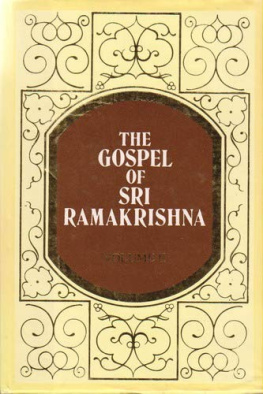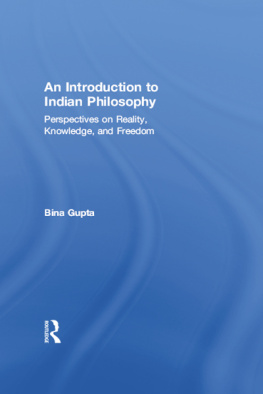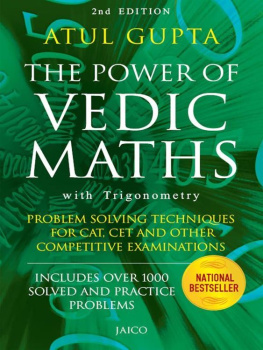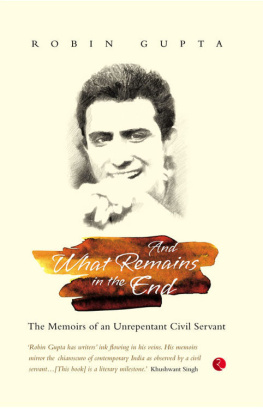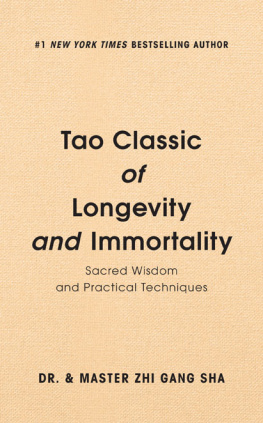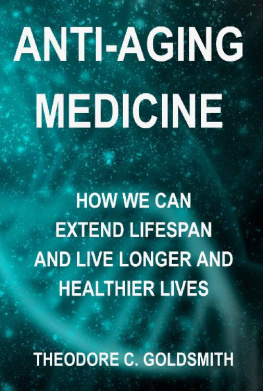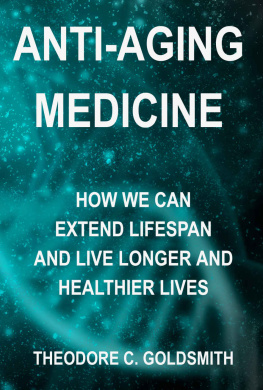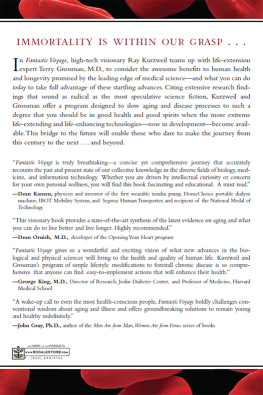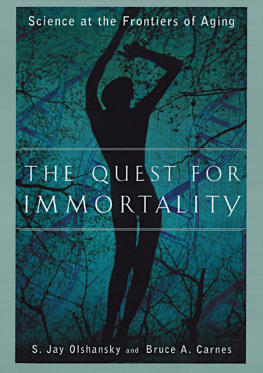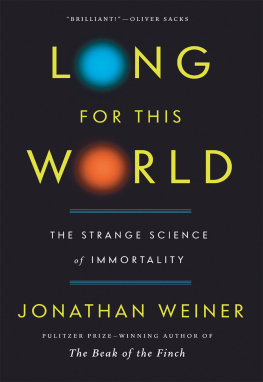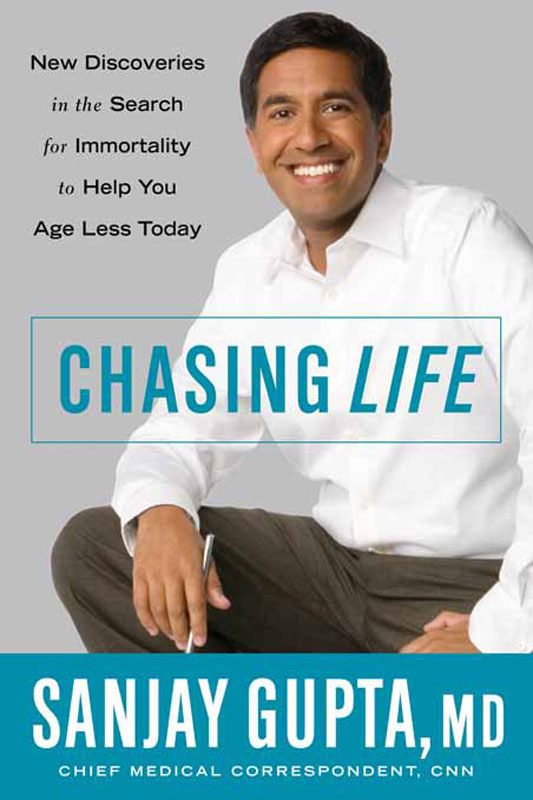Copyright 2007 by Sanjay Gupta, MD
All rights reserved. Except as permitted under the U.S. Copyright Act of 1976, no part of this publication may be reproduced, distributed, or transmitted in any form or by any means, or stored in a database or retrieval system, without the prior written permission of the publisher.
Warner Wellness
Hachette Book Group
237 Park Avenue
New York, NY 10017
Visit our website at www.HachetteBookGroup.com.
The Warner Wellness name and logo are trademarks of Hachette Book Group, Inc.
First eBook Edition: April 2007
ISBN: 978-0-446-19500-3
To my wife, Rebecca, and my daughter, Sage. Thanks for giving me the time to write this book. Please know that I thought about you both while writing every single word. And to my parents, Damyanti and Subhash, and my brother, Suneel, I hope we all achieve our own immortality.
David Martin is a good friend, thorough researcher, and fantastic writer. Without his help, this book simply could not have been finished. Like me, he is passionate about extending the lives of people all around the world. We stumbled upon the fantastic stories of stem cells for the rich and famous in Moscow and spent time learning from the wisdom of centenarians in upstate New York. David will also be the producer of the upcoming television documentary, also called Chasing Life.
Beginning the Chase
A s I started to talk about my modern-day quest for immortality with colleagues and contacts I had developed over the years, I heard murmurs about a group of Russians who were convinced they had stumbled on the fountain of youth. More specifically, they were confident they had developed ways to achieve a sort of practical immortality. In fact, the word echoing through the longevity chambers was that we were rapidly arriving at a time when the only limit on life span might simply be an individuals decision to stop living. Visions of youthful 120-year-olds with several genetically perfect transplanted body parts, exchanged like a muffler or transmission, danced through my head. These Russians heard of my chase for life and started trying to make contact with me. Surely they wanted me to use my platform as a journalist to shine a light on their own work. Honestly, at first, I was skeptical, and it hardly seemed worth pursuing. As I read more and more about these doctors and the patients who stood to benefit, however, I became fascinated, if not obsessed. Doctors there invited me to see firsthand what they called not only the slowing of aging, but the actual reversing of it. I couldnt resist, and with an Indiana Jones sense of adventure, I immediately took them up on their offer, which meant taking a trip to Russia in the heart of winter. As I disembarked the plane into the 20-degree weather, I mused to myself, Okay, I get it, antiaging equals a deep freeze in Siberia. Still, donning a thick, gray wool scarf and one of those ridiculous hats with the earflaps, I started my chase for life.
It is in an upscale business district not far from the Kremlin that I meet Dr. Alexander Tepliashin. He is famous here because he offers something hardly anyone will turn down. With a smile and a series of simple injections under the skin, Tepliashin offers youth in just about ten minutes. Tepliashin euphemistically calls these injections treatments at his Beauty Plaza Health & Spa. He promises to not only make clients look younger but to revitalize their hair and skin and give them more energy. Not surprisingly, there is one small catch. What he is offering is untested and illegal in much of the world.
Tepliashin is a fleshy man with thinning hair combed straight back and a taste for Ukranian Captain Black cigars. His ultramodern clinic takes up the top two floors of a building on a street populated with such luxury shops as Versace and Cartier. An angled glass ceiling brings in lots of natural light, casting a futuristic glow on the furniture. A metal spiral staircase in the center of the lobby leads to treatment rooms on the second floor.
When I come in from the January air outside, Tepliashin greets me warmly and invites me into his office, where coffee and tea are offered all around. Through his translator, he tells me how he is a man of science helping people with a treatment that is in extremely high demand. He shows me articles he has written and informs me of his growing reputation across Europe. Still, there is something unnerving about him. Perhaps it is that he seems comfortable staring at me for several long seconds while not saying a word. Or could be the two all black clad Russian strongmen who are sitting rigidly near the back of his office.
From his desk, Tepliashin likes to watch his computer screen, which offers voyeuristic, closed-circuit views of the operating room, lobby, and elsewhere in the clinic. Small, red rectangles on the screen track any movement, such as a new patient walking through the front door or a young scientist rushing down the hall with small, red-capped vials. Tepliashins gaze, even while talking, appears nearly constantly drawn to the screen, which gives him the air of a scientist in a Bond movie. Lab technicians, all of them attractive young women in tight, white uniforms, add to the Dr. No feel of the place.
Tepliashin stares at me firmly and proclaims that his treatments are safe without me even asking the question. More than that, he says with a nearly dismissive wave of his hand, he can guarantee results. He is so sure of his treatments, he has even injected himself, he tells me while rolling up his sleeves. It has given him a more youthful visage and lowered his cholesterol in the process, all from a treatment that took less time than a blood pressure reading. He strokes his face and runs his fingers through his hair. Other benefits, he tells me, include darker hair, more youthful skin, and more energy. Having never met him before, it is hard for me to tell how much Tepliashin has benefited from his own treatments, but I doubt he could look any more content than he did at that moment. Yes, his just might be the face of a man who has found something that has eluded adventurers for the last thousand years.
As I peer into a vial Tepliashin is shaking back and forth, he whispers two words loud enough for everyone in the room to hearstem cells. Yes, Tepliashin is selling stem cell treatments right under the nose of authorities, who have outlawed them outright. In fact, he runs the best-known Moscow stem cell clinic, which even advertises on the Internet and boasts a clientele from Croatia to as far away as Paris. Coming from the United States, the scientific capital of the world, I feel woefully behind. In the United States, we still only talk about the possibility of stem cell treatments. Here in Russia, where abortions outnumber live births two to one, fetuses and their stem cells are in abundant supply, and they are being used at an ever-quickening pace.
Stem cell treatments have become part of Moscows gossip mill and underground society. Rumors circulate about which well-known Muscovites have undergone them. The pharmaceutical billionaire Vladimir Bryntsalov boasted to the press that his once-pocked skin is now smooth as a babys, thanks to stem cell injections. When the Ukranian leader Viktor Yushchenkos smooth complexion suddenly became discolored and pocked during his 2004 run for president, the common rumor among Muscovites was that stem cell injections gone bad were the cause. We later learned it was dioxin poisoning making him ill and riddling his face with the acnelike scars.
As I traveled through Moscow and visited various laboratories and beauty clinics, I realized that many prominent Russian citizens truly believe they have discovered something astounding, so much so that watchdog organizations overseeing the clinics are willing to turn their eyes the other way when it comes to enforcing the law. Despite the widespread knowledge of their existence, cosmetic stem cell treatments are officially illegal in Russia. You wouldnt know it from the Internet, though, where you can find Russian-language sites offering the treatments. Some stories have reported as many as fifty stem cell clinics in the Russian capital. Not surprisingly, most proprietors at these clinics prefer to remain in the shadows and didnt want to talk. That was not the case with Tepliashin.


